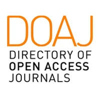Abstract
The construction of the ancient buildings was largely based on geometric projective rules. The analysis of these rules allows to understand the level of the constructors’ knowledge and to interpret the meaning of these architecture. Today this research can be more easily approached thanks to the current survey techniques and to accuracy tools, which simplify the survey of monuments. The analysis of Armenian churches highlighted the importance of the role of light, both in the building construction and in the spatial meaning linked to the liturgy. In this paper the case of S. Astvazazin church in Armenia is presented.
Keywords
Full Text:
PDFDOI: http://dx.doi.org/10.2423/i22394303v8n2p107
References
Aterini, B. (2010). Meridiane e orologi solari. In E. Mandelli (Ed.), Disegnare il Tempo e l’Armonia. Il disegno di architettura osservatorio nell’universo (pp. 162-167). Firenze, Italy: Alinea Editrice.
Aterini, B. (2005). L'indagine geometrica per la comprensione dell'orientamento degli edifici in relazione alla luce solare. In V. Macrì (Ed.), Dall'architettura concreta al modello immateriale. Il rilievo digitale nelle sue valenze euristiche (pp. 70-78). Reggio Calabria, Italy: Laruffa Editore.
Benedetti, B., Gaiani, M. & Remondino, F. (Ed.) (2010). Modelli digitali 3D in Archeologia: il caso di Pompei. Pisa, Italy: Edizioni della Normale.
Clini, P., Lenci, S., Amadei, D., Bertuccioli, L., Camerini, E. & Del Gaiso, C. (2014). La Basilica di Vitruvio a Fano: un approccio di archeologia sperimentale per la validazione di un modello 3D. SCIRES-IT - SCIentific RESearch and Information Technology, 4(1), 69-84.
Cuneo, P. (1988). Architettura Armena. Roma, Italy: De Luca Editore.
De Luca, L. (2011). La fotomodellazione architettonica. Palermo, Italy: Dario Flaccovio Editore.
Fantoni, G. (1988). Orologi solari. Trattato completo di gnomonica. Roma, Italy: Technimedia Editore.
Gaiani, M. (2001). Traduzioni dal reale al virtuale in architettura - Un metodo integrato di acquisizione dati e costruzione di modelli digitali tridimensionali. In R. Migliari (Ed.), Frontiere del rilievo. Dalla matita alle scansioni 3D. Roma, Italy: Gangemi Editore.
Garibian de Vartavan, N. (2009). La Jerusalem nouvelle et les premiers sanctuaires chretiens de l'Armenie, Method puor l'etude de l'eglise comme temple de Dieu. Yerevan, Armenia: ed. Isis Pharia.
Luschi, C. (2015). The Making of the Silk Road in Armenia (C7th-C14th): Vaiots Dzor and Arates Monastery. In Proceedings of VII Congresso Nazionale di Archeologia Medievale (pp. 493-498). Lecce, Italy: All’Insegna Del Giglio Editore.
Luschi, C. (2015). La mistagogia del monastero fra sintassi teologica e composizione architettonica. Roma, Italy: Aracne Editrice.
Migliari, R. (Ed.) (2001). Frontiere del rilievo. Dalla matita alle scansioni 3D. Roma, Italy: Gangemi Editore.
Article Metrics
Metrics powered by PLOS ALM
Refbacks
- There are currently no refbacks.
Copyright (c) 2019 Barbara Aterini

This work is licensed under a Creative Commons Attribution-NonCommercial-NoDerivatives 4.0 International License.
SCIRES-IT, e-ISSN 2239-4303
Journal founded by Virginia Valzano





